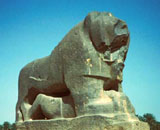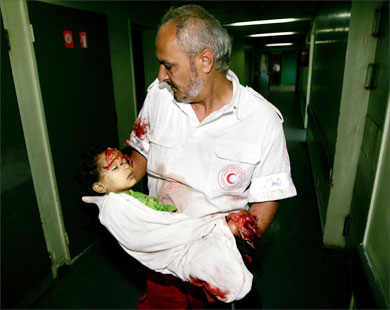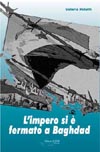Mainstream media is making the same excuses furnished in Iraq for the destruction of infrastructure and the mass killing of civilians in Lebanon, writes Firas Al-Atraqchi
July 27, 2006
When Iraqi complaints of disproportionate firepower levelled at Iraqi cities and civilians surfaced in global media, the US military response was that "insurgents" had hidden among the civilian population.
US media, especially in the case of Fallujah, referred to Iraqi cities where fighting against occupation troops had erupted as "strongholds". The most popular definition for this term alludes to a militarised area akin to a fortress, populated by military or militia-affiliated personnel. The civilian component is therefore removed from the collective psyche.
By performing such a sleight of hand definitions, Fallujah, once home to 400,000 Iraqi men, women and children, was then considered a legitimate target -- an area upon which open warfare and the many horrors thereof was permitted.
This, too, is the semantic strategy for qualifying the destruction of entire neighbourhoods in Beirut and all outlying villages and towns in South Lebanon. Villages dotting the Lebanese side of the border with Israel are now referred to as strongholds.
The influx of such reasoning worked so well in Iraq (civilians continue to die by the busload in the war-ravaged country due to sectarian militia warfare and US military action) that it is now being applied in identical fashion to erase civilian considerations civilised countries must apply to areas of conflict.
For example, Lebanese Prime Minister Fouad Siniora has appealed repeatedly to the international community that hundreds of civilians have been killed in disproportionate Israeli retaliation for the killing of eight Israeli Defence Force soldiers and the capture of a further two on 12 July. But rather than investigate Siniora's claims, the debate on the alarming high numbers of civilian fatalities and casualties has been usurped by a vicious media mechanism meant to deflect blame from the aggressor and partially, if not wholly, lob it on the victim.
Firstly, a declaration is made to the media that the people of Lebanon are not the targets, but rather that certain terrorist elements -- let us call them "dead-enders" to quote US Secretary of Defence Donald Rumsfeld on Iraq -- must be dealt with. These dead-enders, the world is told, must be exorcised from Lebanon for the good of the Lebanese people and to ensure the viability of its government.
Therefore, any military action taken against Lebanon is rendered a hostile act taken to help the Lebanese, not hurt them. This mimics the kind of reasoning used to silence critics of overwhelming firepower brought to bear on areas of Baghdad, Ramadi, Baquba, and Samarra, to name but a few.
When Iraqi civilians are killed in a US military raid on a village or neighbourhood, US spokespersons immediately exonerate US troops by claiming that they came under fire and therefore returned fire to defend themselves. Any civilians killed in such actions are blamed not on the US troops pulling the trigger but on "insurgents" who were in civilian areas to begin with.
Such is the case today with Lebanon. The media is persistently hammered by declarations that the civilian death toll should not blamed on Israel but on Hizbullah fighters who disappear within the civilian population, hide out among women and children, use women and children as human shields, and are hiding their rockets and weaponry in civilian homes.
In the past several days, we have heard Israeli and US officials repeatedly ask the world community to blame Hizbullah for these deaths. Unfortunately, blame cannot resuscitate the dead nor can it do justice for aggrieved surviving families. Nor can such arguments be allowed to prolong the destruction of Lebanon.
But because this mechanism was honed to perfection in responding to Iraqi civilian deaths, and not countered effectively, it is not surprising that this media approach is drafted in and applied to Lebanon.
It's the same when it comes to the issue of "civilian infrastructure". Again, one must refer to the applied model in Iraq. In routing out dead-enders in Iraq, the US military pounded entire neighbourhoods into rubble. Thousands of families were forced to live in tents and many still do as their houses, shops and livelihoods have been destroyed.
This modus operandi is ongoing, and may soon be inflicted upon Ramadi. The situation in Lebanon, sadly, is identical.
In the 1991 bombing of Baghdad, US warplanes targeted water filtration plants that had zero military significance but would eventually give rise to disease as thousands of Iraqis suffered from the lack of potable water. Bridges, factories, homes, ministries, power plants, communications, and sewage treatment and health facilities were also targeted.
The strategy behind targeting such civilian infrastructure was to create difficult conditions for the populace thereby hoping to coerce them into rising up against the Saddam Hussein-led government.
In Lebanon, the severe bombing of cities and towns is designed to shock and awe the civilian populace to pressure its government to move against Hizbullah and disarm it.
Haret Hreik, the southern suburb of Beirut, has been rendered virtually inhospitable. Many buildings, shops, roads and bridges have been utterly destroyed. Buildings still standing will have to be demolished because their structural integrity cannot be assured.
An entire area of Beirut has been effectively overwritten and the rest of the country is virtually under siege, also emulating the siege effect of the United Nations sanctions against Iraq. Lebanon is currently running low on food and medicine. This is collective punishment.
And just as there are 200,000 civilians internally displaced in Iraq, there are now 500,000 internally displaced in Lebanon with a further 200,000 who have crossed the border into Syria and elsewhere.
Iraqis fleeing Iraq; Lebanese fleeing Lebanon.
|

















